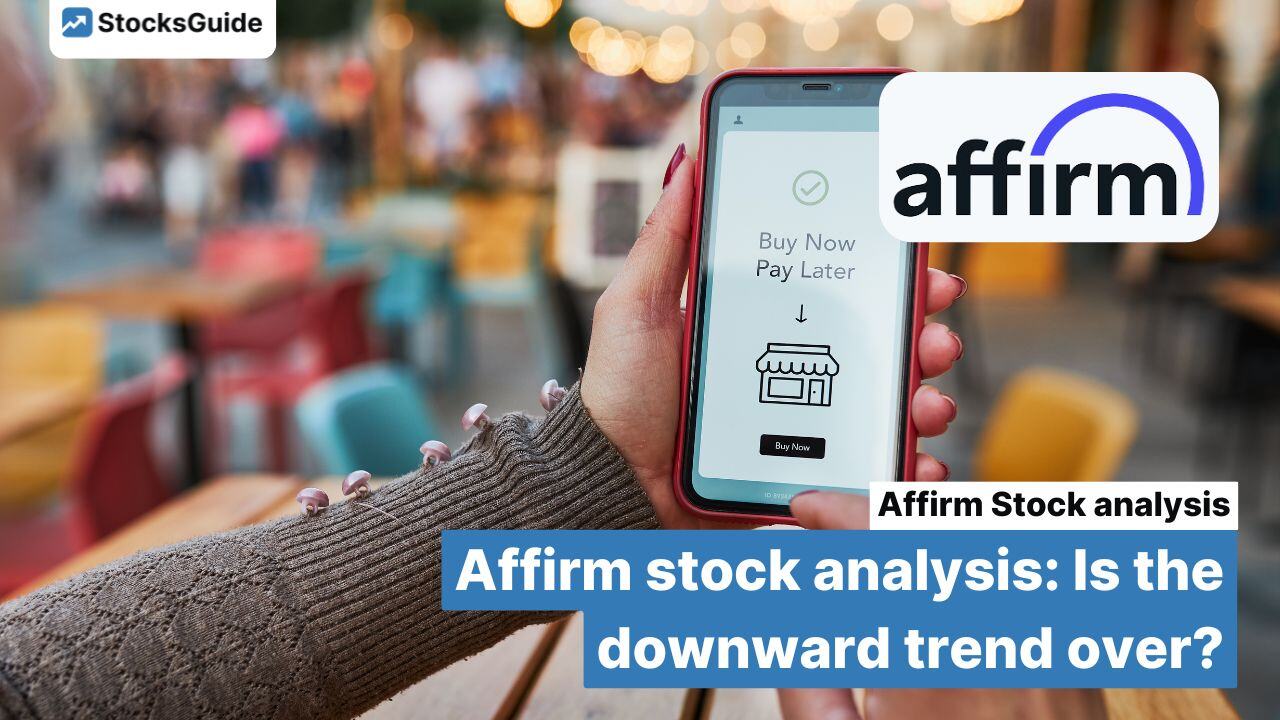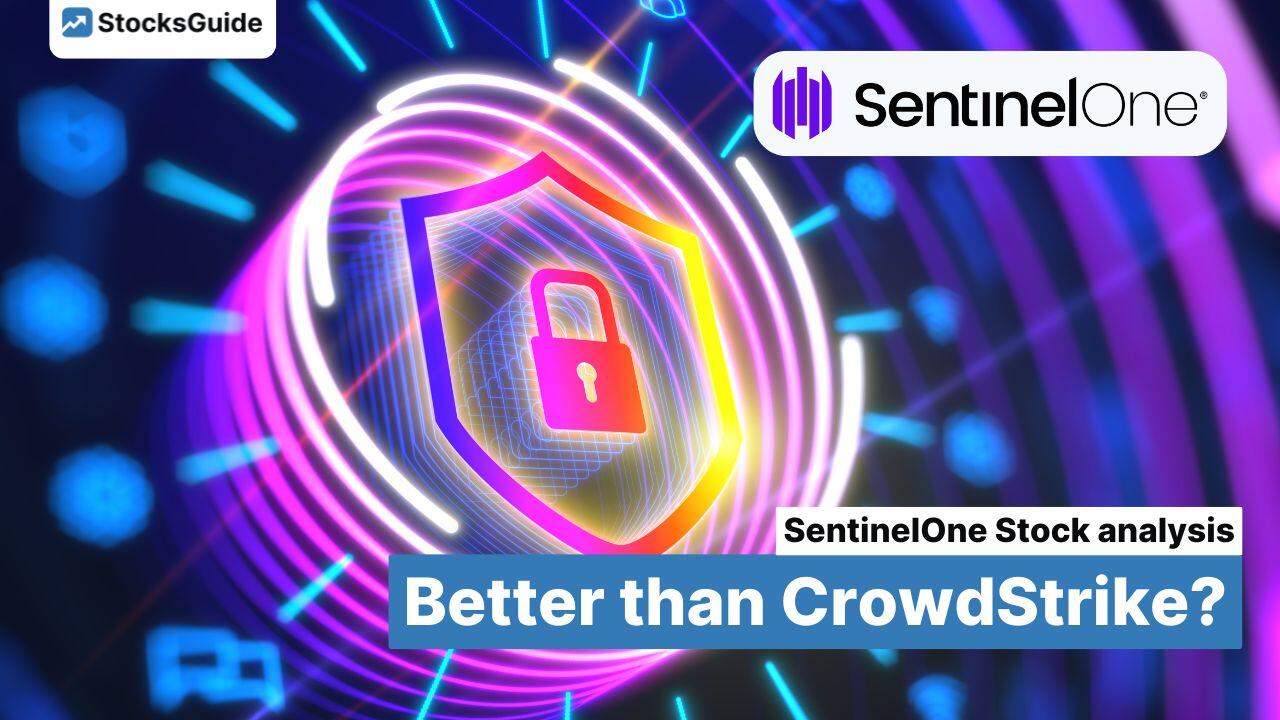Table Of Contents
As is well known, little can be predicted in the short term on the stock market – but one rule has been considered certain in recent years: stocks in the fintech sector have a hard time. The stock of Affirm (ISIN: US00827B1061), which must be counted among the fintechs, is no exception.
(Source: Share price Affirm)
Since Affirm's IPO, investors have lost a total of almost 20 percent, despite the fact that the investment has tripled in the meantime. This means that Affirm fits seamlessly into the price disaster of Upstart, Block or Paypal, whose prices are still between 75 percent and 95 percent below their highs.
But what exactly is a FinTech and what connects these companies? The term “fintech” stands for “financial technology” and describes technological innovations in the financial industry. Fintech companies use modern technologies to make financial services more efficient and cost-effective. Fintechs often target individual parts of the value chain of banks and strive for operational improvements there. These can also consist of a better, digital customer experience. Examples include mobile payment services, online banking and cryptocurrencies.
However, FinTechs are not only characterized by disrupting existing business models, but also by creating new ones. One example of a new business model is the so-called “Buy Now, Pay Later”.
The “Buy Now, Pay Later” (BNPL) business model enables customers to purchase products immediately and pay the amount later in installments. It offers flexible payment options without immediate debiting of the account. Merchants benefit from higher sales and customers from more financial flexibility.
Customers currently seem to appreciate this flexibility. Affirm was able to increase its sales by 48 percent in the last quarter and investors were thrilled. The share price rose by more than 30 percent after the announcement.

Source: Quarterly financial calendar
But was the price explosion just a brief flash in the pan or the beginning of a sustained upward trend? What is the future of Affirm and its business model? And how does Affirm plan to continue generating high growth?
The most important information in brief:
- Affirm is the leading provider of installment loans for online retail payments in North America, also known as Buy-Now-Pay-Later.
- The company is experiencing high revenue growth and is expected to reach profitability in the fourth quarter of the coming fiscal year.
- Affirm hopes to achieve further growth through international expansion.
Affirm's business model
Affirm was founded in 2012 as a classic provider of buy-now-pay-later payment solutions. These products still form the core of the product offering. Among the various options for buy-now-pay-later, Affirm differentiates between two types:
- Pay-in-4
- Core.
Pay-in-4 is a special form of buy-now-pay-later in which the customer repays the purchase price in four installments. The payments are made every two weeks and no interest is charged. This type of installment is therefore very short-term.
Affirm combines the longer-term installment payments in the Core area. These loans are also partially interest-bearing and can be customized by the customer. This means that, in contrast to competitors, both the loan term and the distribution of repayments are flexible. Affirm itself grants loans with terms between 6 weeks and 5 years and a volume of $50 to $30,000.
The application for the loan is largely automated. At the so-called “check-out”, i.e. the payment step for an online purchase, the customer is offered several options. In addition to the well-known methods such as direct debit, instant bank transfer or Paypal, the option Buy-Now-Pay-Later also appears in Affirm's partner shops. Here, Affirm makes specific recommendations regarding the term and repayment schedule of the loan. If a customer selects this option, a credit check is carried out within a few seconds. The algorithm determines five overarching criteria and divides them into around 500 different analysis points. In combination with the purchase amount, the term of the installment loan, the online shop and the product, Affirm determines a score. This score indicates both the risk and the price of the loan.
If a customer wants to buy something from a shop that does not (yet) have an Affirm partnership, they can also do so with the Affirm app. The customer then has to link their account to their bank account. After the purchase, the customer can immediately convert the amount into an installment loan and pay it in installments. In addition, the customer can submit a loan application before purchasing a product. If approved, they can use the Affirm app online or in-store with a specially issued “Affirm card” as a means of payment.
At the same time, the Affirm app also serves as a marketplace where partners post customized offers for products. If the customer wants to buy one of these products, the loan request works in the same way as the loan request above. After a successful check, the customer also receives an Affirm card for a single use.
The offering is rounded off by a savings account that Affirm maintains with a partner bank.
How does Affirm make money?
Every time a purchase is made through Affirm's services, the company receives a commission from the merchant. This is usually a percentage of the purchase volume brokered. This is how Affirm generates most of its revenue.
However, Affirm also earns money through interest, especially on longer-term loans. This income is then spread over the entire term of the loan. Affirm also makes money by selling these loans to partner banks.
Furthermore, Affirm advertises that it does not charge any additional fees after successful loan origination. This means that even if a customer repays their installments late or not at all, no penalty or reminder fees will be charged. Affirm therefore warns investors that the company relies on good financial management on the part of its customers.
What sets Affirm apart?
The answer is short: the automated credit scoring model in conjunction with Affirm's software.
Let's start with the software: unlike competitors, Affirm's software platform is designed to be accessible to a broad customer group. It is therefore universally suitable for small and large shops, order volumes and customer profiles. Thanks to its high capacity, the software is also able to process thousands of payments simultaneously.
In addition, Affirm offers a range of advantages that its competitors lack. Merchants can place their offers directly in the app to attract more attention. At the same time, Affirm can help merchants to address customers in a more targeted and individualized way by evaluating the transactions they have made. The merchant dashboard can be configured with relevant KPIs that the merchant can then evaluate to generate larger orders or more purchases.
The second point that Affirm sees as a competitive advantage is the lending algorithm. Affirm claims to have consistently outperformed conventional lending practices. This has enabled it to issue significantly more loans at significantly lower interest rates. At the same time, the default rates are lower than those of its competitors. The reason for this is an innovative lending model that is continuously improved with the help of machine learning. With over 132 million loans issued, the model is significantly further along than those of its competitors.
In addition, Affirm differentiates between transactions: It does not evaluate whether a potential customer is creditworthy in and of themselves, but rather whether the individual loan can be repaid.
In this respect, Affirm sees itself as superior to the many competitors in the traditional banking and fintech sectors. The problem is that practically every fintech, from Upstart and LendingClub to Nubank, claims to have a superior algorithm. These advantages are also used in their advertising. So how can investors tell whether Affirm is really superior to its competitors?
Affirm has a series of statistics that prove its superiority. For example, an internal pilot project in 2021 with almost 3,500 customers showed that, according to the company, three out of four customers would have postponed or even canceled their purchase without Affirm's solution. In addition, according to internal and external statistics, the number of abandoned purchases was reduced by 28 percent as soon as there was something in the shopping cart, and the order value increased by 60 percent. Furthermore, over 90 percent of the credits were issued to returning customers.
However, the retailers that have been acquired as customers in recent months appear to be much more important: these include Booking, Temu, Shein and TikTok. Particularly interesting, however, is that Apple is now also using Affirm's services. As recently as March 2023, Apple had rolled out its own Buy Now Pay Later offering and offered it to its customers. The fact that Apple is now integrating the services of a direct competitor into its payment ecosystem contradicts its own actions. It shows all the more that Apple sees significant added value for its customers in this step. Not least, the strong revenue growth speaks for Affirm...
Affirm stock quarterly figures Q2 2024
Revenue in the fourth quarter of 2024 increased by almost 50 percent, seamlessly continuing the series of quarters with high revenue growth. EBIT increased at a significantly disproportionate rate, resulting in a significant improvement in operating margins.

Quelle: Profit and loss statement Affirm
As in the previous quarters, net income was negative in the second quarter. This is also due to share-based compensation, which amounted to around $65 million in the fourth quarter alone.
When it announced its fourth-quarter results, Affirm also said it expected to become profitable for the first time in the fourth quarter of next year. Analysts had expected this step to come much later.
As is typical for companies in the financial sector, the balance sheet is characterized by a high level of financial assets and liquid funds, as well as liabilities.

Quelle: Balance sheet Affirm share
The financial assets and receivables are loans granted with outstanding receivables, while the liabilities may be customer deposits or outstanding receivables from merchants. It is therefore difficult to draw conclusions about the balance sheet. However, the sum of receivables, financial assets and liquid funds is sufficient to cover liabilities.
Intangible assets consist almost entirely of goodwill. This stems from a series of smaller acquisitions in recent years. These were used, among other things, to enter the UK market.
What does the future hold for Affirm?
Affirm itself estimates the current American e-commerce market at one trillion US dollars. Of this, the buy-now-pay-later volume is approximately 60 billion. Affirm serves exactly one-third of this, or approximately 20 billion. To grow further, Affirm is focusing on three specific steps.
More partnerships with merchants: The integration of Affirm into more online shops and payment providers should drive growth. In 2023, Affirm will have partnerships with 75 merchants and 14 payment service providers. The payment service providers can expand their own offerings with Affirm without taking on additional risks. Additional revenue potential can be tapped for Affirm.
International expansion: Affirm is currently only active in North America. The company plans to expand into Europe in the coming quarters and possibly also into Asia in the future. Affirm plans to enter the European market in the UK.
B2B: Until recently, Affirm's offering was aimed exclusively at private customers. In fact, Affirm estimates that small and medium-sized companies have a financing need of $1.4 trillion, which is larger than the total e-commerce market ($1.0 trillion) in the US. Up to $700 billion of this is potentially accessible, with Affirm already covering around $300 billion with existing products.
These include credit cards, loans with fixed rates and terms, and lines of credit. For this reason, Affirm expanded its existing partnership with Amazon to include Amazon Business in November 2023. Companies that buy from Amazon Business now also have the option to pay for their purchases via Buy Now Pay Later.
Who runs Affirm?
A lot in the company is focused on founder and CEO Max Levchin. Max Levchin was previously on the founding team of Paypal and Yelp before Affirm. In addition, Max founded two other companies and served on the Yahoo board from 2012 to 2015. In 2002, Max was named one of the top 100 innovators by Technology Review TR100. If that's not an impressive resume, what is?
He is mainly supported by Michael Linford, previously with HP, as CFO, and Catherine Abkins as Chief Compliance Officer. This role is particularly important due to the tightened guidelines in the area of finance. From 2011 to 2019, Catherine had already served in similar roles at Toyota Financial Services as Vice President. Since 2019, she has served in various compliance roles at Affirm.
Valuation of Affirm stock
The HGI score of the StocksGuide gives the following assessment:

In particular, the high revenue growth of the last 12 months is positively reflected in the score. This has also significantly boosted the Rule of 40 score.
However, as with all fintechs, the HGI score should be treated with caution. For example, the gross margin is difficult to determine for fintechs. The leverage ratio is influenced by the loans granted, which are shown as receivables on the assets side. They are therefore only included in the valuation on the liabilities side. The gross margin is also calculated differently for FinTechs. Affirm itself, for example, uses the metric “Revenue less transaction costs”, and even comes up with a value of 91 percent here.
So let's turn to the valuation: an EV/Sales of just over 7 seems reasonable when looking at other fintechs with similar business models.

Affirm is not significantly higher valued than Upstart and Nubank, but it has fewer country and currency risks than the Brazilian Nubank. Upstart has also attracted negative attention in the past when its algorithms temporarily did not appear to be suitable for a higher interest rate level.
Conclusion on the Affirm stock
It is extremely difficult to make a final assessment of the Affirm stock. Affirm is currently experiencing high growth rates and is benefiting enormously from the buy-now-pay-later trend. With a market share of one third, the company also appears to be the undisputed market leader. What's more, even companies like Apple, Amazon and Google use Affirm's services.
There are two main factors that speak against this:
Buy Now Pay Later is a relatively new phenomenon and Affirm has so far only demonstrated that it works in economically good times. Currently, the economy is doing well and American households are happily continuing to take on debt, in line with the rising national debt. Consumer debt alone now totals 16.9 trillion US dollars. At the same time, payment defaults are on the rise. It remains to be seen how Buy-Now-Pay-Later will develop if these figures continue to deteriorate.
Currently, Affirm seems to have the edge on its competitors, but it is operating in a highly competitive market. In addition to the competitors mentioned above, the company itself cites all major American banks, Visa and Mastercard as competitors. Especially when the market becomes even more lucrative financially, it will be difficult to stay at the top permanently.
Another point that speaks against Affirm shares is the current dilution. Over the last 3 years, the number of shares has increased by more than 15 percent. Over the course of a year, it is still just under 10 percent.
A lot will depend on whether the company can defend its competitive advantage in the long term and whether Buy-Now-Pay-Later remains a growth market. This is an assessment that is currently difficult for many, as analysts' assessments also show.

The majority advise holding, with the target price roughly in line with the current price. However, the dispersion of price targets is remarkable. While the lowest price target is around half of the current price, the highest price target suggests an upside potential of 60 percent.
A good risk-reward ratio could arise if the price falls further. Risk-averse investors can set an alarm at an EV/Sales of <5.




